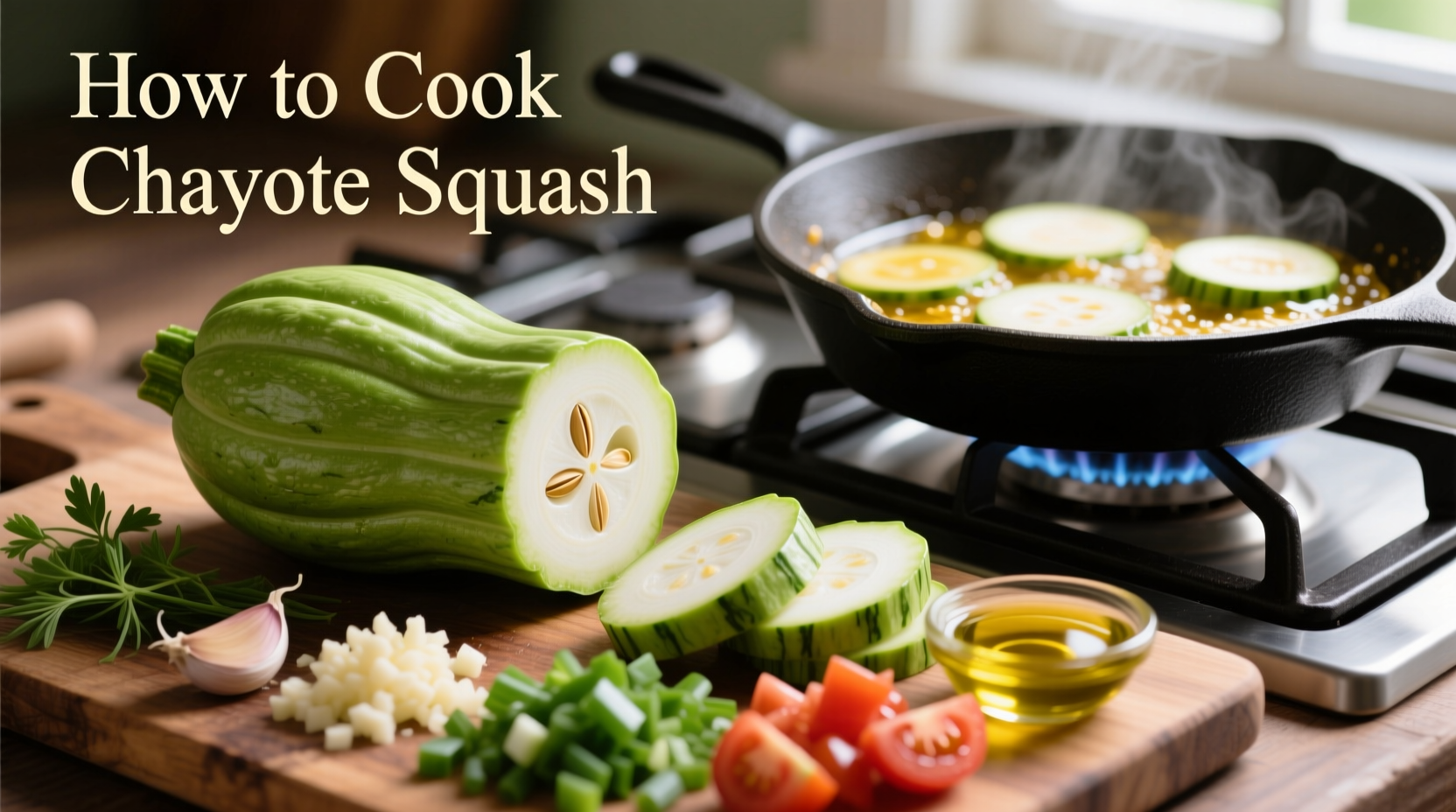Chayote squash cooks best when sliced and prepared with simple techniques: peel the slippery skin, remove the seed, then roast at 400°F for 25 minutes, sauté for 8-10 minutes, or boil for 15 minutes until tender. Proper seasoning with garlic, citrus, or herbs transforms its mild flavor into a delicious side dish or main component.
Discover how to transform this underutilized squash from bland to brilliant with professional cooking techniques that highlight its delicate flavor and crisp-tender texture. Whether you're a beginner or experienced cook, these methods ensure perfect chayote every time.
Selecting Quality Chayote Squash
Choose firm, bright green chayote without soft spots or blemishes. Smaller squash (4-6 inches) typically have thinner skin and fewer fibers. The vegetable should feel heavy for its size, indicating freshness and good moisture content. Avoid yellowing specimens, which signal overripeness and potential bitterness.
Store uncut chayote in a cool, dark place for up to two weeks. Once cut, wrap tightly in plastic and refrigerate for no more than three days. Unlike other squashes, chayote doesn't freeze well due to its high water content.
Proper Preparation Techniques
Chayote's slippery texture makes preparation challenging. Follow these steps for efficient handling:
- Wear gloves during peeling to prevent skin irritation from the natural compounds
- Use a sharp vegetable peeler or paring knife to remove the thin skin
- Cut lengthwise to access and remove the single, edible seed
- Immediately submerge cut pieces in acidulated water (1 tablespoon lemon juice per cup of water) to prevent discoloration
Unlike other squashes, chayote requires minimal prep time—just 5-7 minutes from whole to ready-to-cook. The seed can be roasted separately for a nutty flavor or discarded.

Optimal Cooking Methods
Roasting for Maximum Flavor
Roasting concentrates chayote's natural sweetness while creating appealing caramelization. Toss 1-inch cubes with 1 tablespoon olive oil, salt, and pepper. Spread evenly on a parchment-lined baking sheet and roast at 400°F for 25-30 minutes, flipping halfway through, until golden brown and fork-tender.
Professional chefs often add complementary flavors during the last 10 minutes of roasting:
- Minced garlic
- Lemon zest
- Chopped fresh herbs (cilantro, thyme, or oregano)
- A splash of white wine for deglazing
Sautéing for Quick Weeknight Meals
For busy cooks, sautéing delivers restaurant-quality results in minutes. Heat 2 tablespoons oil in a skillet over medium-high heat. Add ¼-inch thick chayote slices and cook 4-5 minutes per side until golden and tender-crisp.
| Cooking Method | Time | Temperature | Texture Result |
|---|---|---|---|
| Roasting | 25-30 min | 400°F | Caramelized exterior, tender interior |
| Sautéing | 8-10 min | Medium-high | Crisp-tender with golden edges |
| Steaming | 12-15 min | High | Firm but tender, ideal for salads |
Steaming for Delicate Applications
Preserve chayote's crisp texture for salads and cold dishes by steaming. Cut into uniform pieces, place in a steamer basket over 1 inch of boiling water, and cover. Cook 12-15 minutes until fork-tender but still holding shape. Immediately transfer to an ice bath to stop cooking and maintain vibrant color.
Flavor Pairing Strategies
Chayote's mild flavor acts as a perfect canvas for bold seasonings. Traditional Latin American preparations often feature:
- Lime juice and cilantro for fresh salsa applications
- Garlic and cumin for earthy depth
- Creamy elements like avocado or coconut milk
- Spicy accents from jalapeños or serranos
For international twists, try:
- Asian-style: soy sauce, ginger, and sesame oil
- Mediterranean: lemon, oregano, and feta cheese
- Caribbean: allspice, thyme, and scotch bonnet peppers
Nutritional Benefits Verified by USDA Data
According to the USDA FoodData Central, chayote provides significant nutritional value per 100g serving:
- Only 19 calories
- 1.7g dietary fiber (7% of daily value)
- 7.7mg vitamin C (13% of daily value)
- 23mcg folate (6% of daily value)
- Good source of potassium and manganese
This low-calorie vegetable supports hydration and digestive health while providing essential micronutrients. Its high water content (94%) makes it particularly valuable during warmer months.
Avoiding Common Preparation Mistakes
Even experienced cooks make these chayote errors:
- Skipping the acidulated water bath - leads to discoloration and potential bitterness
- Overcooking - transforms crisp texture into mush (test with fork at minimum time)
- Under-seasoning - chayote needs generous salt to enhance its subtle flavor
- Using dull knives - increases slipping hazard during preparation
Professional kitchens often add a pinch of sugar when roasting to balance any potential bitterness that develops during cooking, especially in larger, more mature squash.
Simple Recipe Ideas to Try Tonight
Chayote and Black Bean Tacos
Sauté diced chayote with onions and garlic until tender-crisp. Add 1 cup black beans, cumin, and chili powder. Serve in warm corn tortillas with avocado slices and lime crema.
Creamy Chayote Soup
Sauté chayote, leeks, and potatoes. Add vegetable broth and simmer until tender. Blend until smooth and finish with coconut milk and fresh herbs.
Chayote Salad with Citrus Vinaigrette
Steam chayote slices until tender-crisp. Toss with orange segments, red onion, and a dressing of olive oil, lime juice, honey, and cilantro.
Storage and Leftover Tips
Cooked chayote maintains quality for 3-4 days in an airtight container in the refrigerator. Reheat roasted or sautéed chayote in a skillet rather than microwave to preserve texture. For meal prep, undercook chayote slightly as it will continue to soften when reheated.











 浙公网安备
33010002000092号
浙公网安备
33010002000092号 浙B2-20120091-4
浙B2-20120091-4